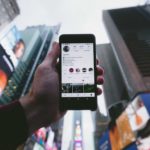 The COVID-19 pandemic has been an interesting time for many celebrities as they seek to retain influence in a world in which they have seldom been less relevant. Instead, it’s been the turn of doctors, nurses, and other key workers who have been lauded by a public freshly reminded just how important they are to our wellbeing.
The COVID-19 pandemic has been an interesting time for many celebrities as they seek to retain influence in a world in which they have seldom been less relevant. Instead, it’s been the turn of doctors, nurses, and other key workers who have been lauded by a public freshly reminded just how important they are to our wellbeing.
New research from University College London reminds us that influencers shouldn’t be completely dismissed as an irrelevance in these challenging times, however. The study argues that social media influencers can encourage people, especially the young, to observe things such as social distancing during the pandemic.
“For many people, adolescence – between the ages of 10 and 24 – is when you want to be making more social connections, not losing them. It’s also a time of increased risk-taking and sensitivity to peer influence,” the researchers say. “For some adolescents it’s a challenge to stick to social distancing rules, particularly if their friends aren’t following the rules.”
Taking risks
As well as being anti-social, the researchers highlight that breaking social distancing is a risk-taking behavior, with some countries imposing legal and financial consequences for breaching it. It can be especially challenging ensuring that young people obey such rules and expectations.
The study reveals that campaigns led by adults have had mixed results in terms of influencing adolescent behavior, with reports of large student gatherings across the United States in March a vivid demonstration of the challenges involved.
Instead, the authors believe that adolescents may take more notice if the campaigns feature other adolescents, and focus on changing peer attitudes towards social distancing.
“Adolescents look to their peers to understand social norms, and align their behaviour with the group they want to belong to. The speed and extent of peer influence online is likely to amplified, because social media has such a wide and immediate reach,” the researchers say.
Peer pressure
The study builds upon previous works, which highlight that adolescents are more likely to engage in risky behaviors when they’re in the presence of peers, or are influenced by their peers in some way. Equally, however, this peer pressure can have beneficial outcomes, as adolescents are also more likely to engage in beneficial activities if their peers do so.
“The advantage of social media influencers is that the motivation for social distancing comes naturally from the young people themselves. Influencers could post videos or photos online, for example, showing how they are following social distancing rules by staying at home, and add tags to increase their visibility through sharing and Likes. Many YouTubers are already doing this. It’s really just presenting public health advice in a more accessible way that adolescents are more likely to listen to,” the researchers explain.
They believe that if social distancing can become the group norm among peer groups, then it’s much more likely to be copied by others. By using social media influencers, the researchers suggest officials could cut across multiple spheres of interest, and therefore reach a diverse group of people.
To create positive change, adolescents must be given the chance and the capacity to lead their own ideas. The researchers hope that their idea will be adopted by public health officials and charities to ensure that the covid guidance is both seen and absorbed by young people.